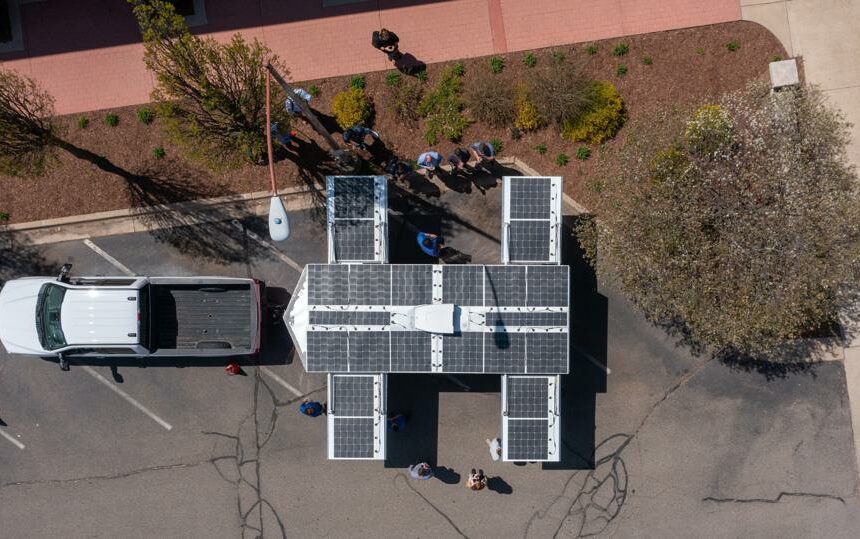America is a massive country that runs the gamut when it comes to natural terrain. Couple that with our changing climate, and our country faces just about every natural disaster that there is. This summer we’ve seen California on fire, Kentucky flooded, and more disasters impacting local communities. As always, disaster relief will be deployed. But in areas destroyed by natural disasters, how will responders generate the energy needed for such humanitarian efforts?
>>>READ: America Could Run On Spent Nuclear Fuel…If We Let It
Sesame Solar is setting out to change the way disaster relief efforts are powered. The Michigan-based startup is selling what it has dubbed the world’s first fully-renewable mobile nanogrid. Why is this important?
Natural disasters often wipe out the area’s power grid, leaving responders and residents at the mercy of generators. These generators typically run on diesel fuel, which leads to plenty of carbon emissions alongside some other cons. Scarcity of diesel after a disaster is one significant problem, with a report from National Renewable Energy Laboratory researchers explaining:
“[D]iesel generators pose the additional risk of running out of fuel in situations where resupply is not possible. Fuel-related risks are highest for widespread, long outages. Most power outages are short-duration events, but long-duration outages are not uncommon, especially in areas prone to natural disasters such as hurricanes, tornados, or wildfires.”
America is likely to see more natural disasters in the future. That means that we should be addressing our response challenges today. If diesel is not the answer for backup power, what should be?
Solar is one potential answer, and that is the prime energy source that Sesame Solar uses to power its mobile nanogrids. These units have solar panels on top that can be unfolded, with the entire unit ready for use within 15 minutes of being deployed.
Speaking about this innovation, Sesame’s CEO and co-founder Lauren Flanagan commented:
“The whole concept is that no fossil fuels are required to be able to have days or weeks of energy autonomy after an extreme weather disaster, like a hurricane or tornado or wildfire, or an event of grid outage in California…or a cyber-attack, or anytime the grid is just down. We combine solar and battery storage, or we also have other sources of renewable power, we use green hydrogen as backup power. And we can do small wind turbine[s] if conditions are right.”
>>>READ” North Carolina Youth Apprenticeship Program is Securing Tomorrow’s Clean Energy Workforce
Sesame has already sold roughly 50 of its units at a range of prices and sizes. High-profile buyers include the U.S. Air Force and cable provider Comcast.
Vijay Chattha of VSC Ventures, one of Sesame’s investors, noted:
“There have been 18 multibillion-dollar climate disasters in the U.S. in the last 18 months. And it’s rare you’re going to find a company that already has revenue, already has customers, already has impacted the world, and has done it on a shoestring budget.”
Sesame Solar wants the Federal Emergency Management Agency (FEMA) to get on board with the innovation, believing it would be a ‘gamechanger’ in powering disaster management. But until that point, the company will continue to slowly reframe disaster response, one mobile unit at a time.
Kelvey Vander Hart is a native Iowan, a member of the American Conservation Coalition, and a communications specialist at Reason Foundation.
The views and opinions expressed are those of the author’s and do not necessarily reflect the official policy or position of C3.
